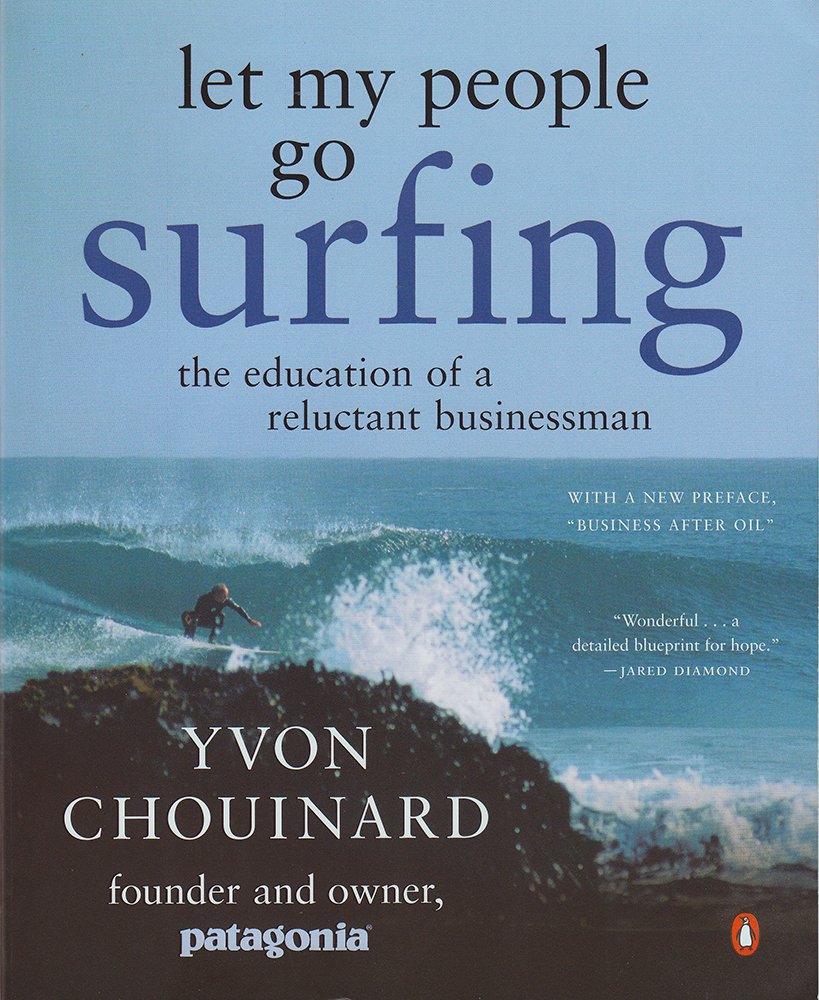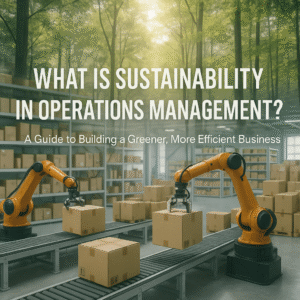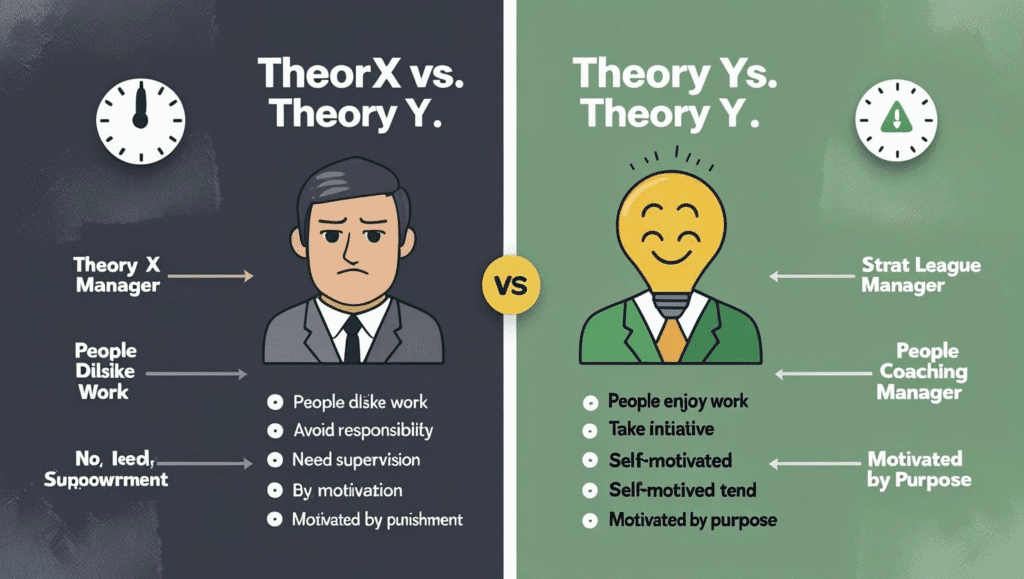What is Sustainability in Operations Management? A Guide to the Triple Bottom Line
For decades, the primary goal of operations management was simple: efficiency. The focus was on making products faster, cheaper, and better, with the ultimate aim of maximizing profit. But in the 21st century, a powerful and transformative idea has taken root: what if “better” meant more than just profit? This is the central question of **sustainability in operations management**, a modern approach that redefines success by balancing economic performance with environmental stewardship and social responsibility. 🌱
Sustainability is no longer a niche concern for “green” companies; it’s a strategic imperative for any business in the U.S. that wants to thrive in the long term. Consumers are increasingly demanding ethically sourced products, investors are using environmental and social criteria to evaluate companies, and employees want to work for organizations that align with their values. Integrating sustainability into operations is not just about corporate social responsibility; it’s about risk management, innovation, and building a resilient, future-proof business.
This comprehensive guide will unpack the meaning and importance of sustainability in operations management. We’ll explore its core framework—the Triple Bottom Line—and examine the practical ways that companies are implementing these principles in their supply chains, product design, and daily processes.
Key Takeaways: Building a Better Business 🏗️
- Sustainability in Operations Management is about making decisions that are economically viable, environmentally sound, and socially responsible.
- It’s guided by the **Triple Bottom Line (TBL)** framework: **Profit, Planet, and People**.
- This approach moves beyond a single-minded focus on financial profit to a more holistic view of business success.
- Key practices include lean manufacturing (reducing waste), green supply chain management, and designing for the entire product life cycle (from creation to disposal).
- Adopting sustainability is a source of long-term competitive advantage, enhancing brand reputation, attracting talent, and driving innovation.
The Guiding Framework: The Triple Bottom Line (TBL)
The concept of sustainability in business was famously articulated by John Elkington in 1994 with the “Triple Bottom Line.” He argued that companies should not only be measured by their financial performance (the traditional “bottom line”) but also by their impact on the environment and society. The TBL framework consists of three interconnected pillars:
1. Profit (Economic Sustainability)
This is the traditional measure of business success. To be sustainable, a company must be profitable. Without financial viability, it cannot achieve its environmental or social goals. However, in the TBL context, profit is viewed through a long-term lens. It’s not about maximizing short-term gains at any cost, but about building a resilient business model that can generate consistent value over time. This includes managing risks, investing in innovation, and maintaining strong financial health.
2. Planet (Environmental Sustainability)
This pillar focuses on a company’s impact on the natural environment. The goal is to minimize the negative footprint and, where possible, to have a restorative effect. This involves a wide variety of control measures throughout the operation.
- Managing Resources: Reducing the consumption of energy, water, and raw materials.
- Reducing Waste and Pollution: Minimizing emissions, effluents, and solid waste throughout the production process and supply chain.
- Product Life Cycle Management: Designing products that are durable, repairable, and recyclable, considering their environmental impact from “cradle to grave” (or ideally, “cradle to cradle”).
3. People (Social Sustainability)
This pillar is concerned with the company’s impact on its stakeholders, including employees, customers, suppliers, and the community. It’s about being a good corporate citizen and ensuring fair and ethical treatment for all.
- For Employees: Providing fair wages, safe working conditions, opportunities for development, and a commitment to diversity and inclusion. Efficient management of this requires robust systems, often including integrated HR and payroll software.
- For the Community: Ethical sourcing, supporting local communities, and ensuring the company’s operations do not negatively impact public health or well-being.
- For Customers: Providing safe, high-quality products and being transparent in marketing and business practices.
The Triple Bottom Line is not about making trade-offs between these three pillars. It’s about finding the “sweet spot” where they overlap—where a decision is good for profit, good for the planet, and good for people.
| Pillar (The 3 P’s) | Core Question | Operations Management Focus |
|---|---|---|
| Profit (Economic) | “Is this decision financially viable for the long term?” | Risk management, lean operations, innovation, cost efficiency. |
| Planet (Environmental) | “Does this decision minimize our negative environmental impact?” | Waste reduction, energy efficiency, green supply chains, product life cycle design. |
| People (Social) | “Is this decision fair and beneficial for our employees, community, and customers?” | Ethical sourcing, workplace safety, employee development, community engagement. |
Putting Sustainability into Practice: Key Operations Strategies
Integrating the TBL framework into day-to-day operations requires a set of specific, actionable strategies.
1. Lean and Green Manufacturing
The principles of lean manufacturing—relentlessly focused on eliminating waste—are a natural fit for environmental sustainability. Every piece of scrap material, every wasted kilowatt of energy, and every unnecessary transportation mile is both a cost to the company (bad for Profit) and a burden on the environment (bad for Planet). By focusing on “green” processes, companies can often achieve both goals simultaneously.
2. Sustainable Supply Chain Management
A company’s sustainability footprint extends far beyond its own four walls. Sustainable supply chain management involves vetting suppliers for their own environmental and social practices. This can include auditing suppliers for fair labor practices, prioritizing local sourcing to reduce transportation emissions (known as “food miles” in the food industry), and collaborating with partners to reduce packaging waste.
3. Product and Service Design for Sustainability
This is a proactive approach that builds sustainability into the very DNA of a product. It involves:
- Design for Environment (DfE): Using recycled and non-toxic materials, designing for energy efficiency during use, and making products easy to disassemble and recycle at the end of their life.
- Servitization: Shifting the business model from selling products to selling a service. For example, instead of selling light bulbs, a company might sell “lighting services” (a model Philips has experimented with). This incentivizes the company to make the bulbs as long-lasting and energy-efficient as possible.
Learn from the Leaders in Sustainable Business
The journey to sustainability is complex but rewarding. These books, available on Amazon, are essential reading for any business leader looking to integrate the Triple Bottom Line into their own operations.

Let My People Go Surfing: The Education of a Reluctant Businessman
The founder of Patagonia, Yvon Chouinard, shares his radical philosophy on building a company that is deeply committed to environmental and social responsibility.
View on Amazon
The Goal: A Process of Ongoing Improvement
While not explicitly about sustainability, this business novel is a masterclass in operations management and eliminating waste—a core principle of the “Planet” pillar.
View on Amazon
Multipliers: How the Best Leaders Make Everyone Smarter
A key part of social sustainability (“People”) is empowering your employees. This book is a guide to leadership that unlocks the full potential of your team.
View on AmazonFrequently Asked Questions (FAQs)
Q1: Is being sustainable more expensive for a business?
A: There can be upfront investment costs (e.g., for more energy-efficient equipment). However, in the long run, sustainability is often *more* profitable. Reducing energy and material consumption directly lowers operational costs. A strong sustainability record can attract top talent and loyal customers. It also reduces regulatory and reputational risks. The idea that sustainability and profitability are in conflict is an outdated myth.
Q2: What is “greenwashing”?
A: Greenwashing is the practice of making a company seem more environmentally friendly than it actually is through deceptive marketing and PR. For example, a company might heavily advertise one “green” product while the rest of its operations remain highly polluting. True sustainability is about substantive operational changes, not just marketing spin.
Q3: How can a small business be sustainable?
A: Sustainability isn’t just for large corporations. A small business can have a huge impact. Simple steps include conducting an energy audit to reduce utility bills, implementing a recycling program, sourcing supplies from local vendors, and offering flexible work arrangements to improve employee well-being. Every step, no matter how small, contributes to the Triple Bottom Line.
Q4: What is the “circular economy”?
A: The circular economy is an advanced model of sustainability. It’s a move away from the traditional “take-make-dispose” linear model. In a circular economy, products are designed from the outset to be reused, repaired, and remanufactured. The goal is to eliminate waste entirely and keep materials in circulation for as long as possible. It’s a key strategy for achieving long-term environmental sustainability.


